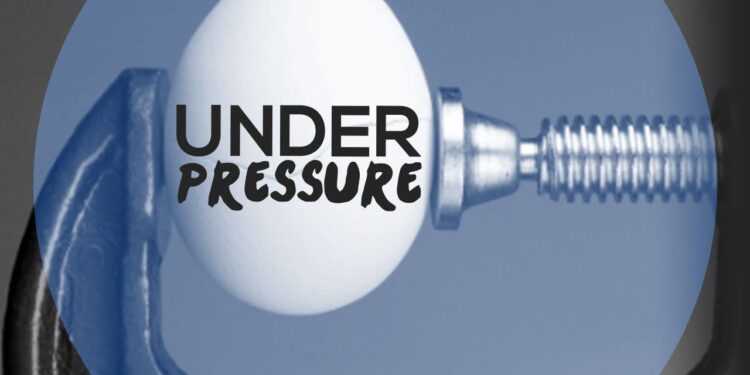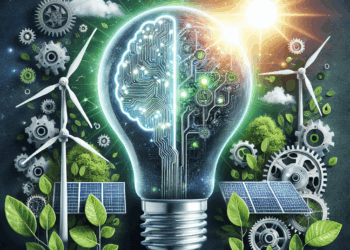Global supply chains have faced unprecedented stress in recent years. From the lingering effects of the COVID‑19 pandemic to geopolitical conflicts and climate extremes, businesses around the world are grappling with disruptions that threaten the flow of goods and services. These challenges not only inflate costs but also undermine reliability and customer satisfaction. In this comprehensive article, we explore the root causes of today’s supply chain turmoil, examine real‑world case studies, and offer actionable strategies to build resilience. Whether you’re a procurement manager, logistics executive, or C‑suite leader, understanding these dynamics is critical for safeguarding operations and sustaining growth in an increasingly volatile landscape.
A. Disruptive Factors Affecting Supply Chains
A. Pandemic Aftershocks
Even as COVID‑19 transitions from crisis to endemic, its aftereffects linger. Factory shutdowns in 2020–2021 created component shortages that cascaded through industries, from electronics to automotive. Consumer behavior shifts—such as the surge in e‑commerce—further strained warehousing and last‑mile delivery networks.
B. Geopolitical Tensions
Trade disputes between major economies, including US‑China tariffs and sanctions on Russia, have rerouted shipping lanes and prompted companies to seek alternative suppliers. Recent sanctions on semiconductor exports to China illustrate how politics can abruptly sever critical supply lines.
C. Climate Change Impacts
Extreme weather events—hurricanes in the Gulf of Mexico, floods in Europe, wildfires on the US West Coast—have repeatedly shuttered ports, rail yards, and manufacturing hubs. The El Niño‑driven storms of 2023‑2024, for instance, caused widespread delays in Southeast Asian electronics factories.
D. Technological Disruptions
While digital tools promise efficiency, cyberattacks on logistics providers have grown more sophisticated. In late 2023, a ransomware incident at a leading freight forwarder delayed shipments for weeks, underscoring the vulnerability of interconnected IT systems.
E. Labor Shortages
The “Great Resignation” and aging workforce have left warehouses and ports understaffed. In the US, truck driver shortages—exacerbated by stringent hours‑of‑service regulations—have driven up freight rates by over 20% since 2021.
F. Regulatory Complexities
Evolving customs rules, sustainability mandates, and data‑privacy laws require continuous adaptation. The EU’s Carbon Border Adjustment Mechanism, set to launch in 2026, will impose tariffs based on embedded emissions, forcing companies to rethink sourcing strategies.
B. Consequences for Businesses and Economies
Supply chain breakdowns translate directly into higher costs, reduced inventory turnover, and lost sales. Small and medium‑sized enterprises (SMEs) often lack the financial buffer to absorb sudden price spikes for raw materials or freight. On a macro level, the World Bank estimates that global trade growth slowed to 1.2% in 2023—down from 9% in 2021—due in large part to these disruptions. Consumers face higher retail prices and delayed product launches, eroding brand loyalty. Governments, meanwhile, are under pressure to secure critical supplies—such as semiconductors and pharmaceuticals—to protect national interests.
C. Case Studies of Recent Disruptions
1. Port Congestion at Major Hubs
In early 2024, the Port of Los Angeles experienced record dwell times, with container ships waiting an average of eight days to berth. Contributing factors included labor disputes, drayage truck shortages, and unpredictable cargo volumes. This bottleneck reverberated across North American supply chains, delaying goods from electronics to apparel.
2. Semiconductor Shortages
Automakers worldwide cut production in 2021 and 2022 due to chip shortages. Despite ramped‑up investments by TSMC and Samsung in new fabrication plants, capacity remains tight. The industry’s reliance on a handful of wafer fabs in Taiwan and South Korea continues to pose a systemic risk.
3. Red Sea Shipping Diversions
Since late 2023, attacks on vessels by Houthi militants have forced carriers to reroute ships around the Cape of Good Hope, adding up to two weeks of transit time and $200 million in extra fuel costs monthly. This rerouting has strained already overburdened ports in South Africa and Europe.
4. Energy Crisis Impact
Europe’s 2022‑2023 energy crunch—triggered by reduced Russian gas supplies—led to rolling blackouts in factories across Germany and Italy. Production of energy‑intensive goods, from chemicals to steel, slowed dramatically, highlighting the interdependence of energy security and manufacturing.
D. Strategies for Enhancing Supply Chain Resilience

A. Diversification of Suppliers
Relying on a single region or vendor increases vulnerability. Companies are now mapping their entire supplier ecosystem and qualifying secondary sources in different geographies to mitigate disruptions.
B. Nearshoring and Reshoring
Bringing production closer to end markets reduces lead times and currency risk. US manufacturers, for example, are relocating some operations from Asia to Mexico to capitalize on the USMCA trade agreement.
C. Investment in Digital Technologies
Real‑time visibility platforms powered by cloud computing and IoT sensors enable proactive decision‑making. By integrating transportation management systems (TMS) with warehouse management systems (WMS), firms can optimize inventory placement and routing dynamically.
D. Strengthening Partnerships
Collaborative relationships with carriers, 3PLs, and even competitors—through initiatives like shared warehousing—can unlock efficiencies and collective bargaining power.
E. Sustainable Practices
Embedding ESG criteria into procurement decisions not only meets regulatory demands but also attracts capital from sustainability‑focused investors. Green logistics—such as electric trucks and carbon‑neutral shipping—are gaining traction.
F. Workforce Development
Investing in training programs and automation to address labor shortages ensures operational continuity. Apprenticeships, upskilling initiatives, and partnerships with vocational schools help build a pipeline of qualified workers.
E. Role of Emerging Technologies
A. AI and Machine Learning
Predictive algorithms forecast demand more accurately by analyzing historical sales, market trends, and external data like weather patterns. AI‑driven anomaly detection also flags potential disruptions before they escalate.
B. Blockchain
Distributed ledgers enhance traceability and trust. In the food industry, blockchain pilots track produce from farm to shelf, reducing spoilage and ensuring compliance with safety standards.
C. Internet of Things (IoT)
Smart sensors on containers and pallets monitor temperature, humidity, and location in real time. This granular data helps maintain product quality—critical for pharmaceuticals and perishable goods.
D. Digital Twins
Virtual replicas of physical supply networks allow scenario testing—such as simulating port closures or demand spikes—without risking real‑world assets.
E. Advanced Analytics
Big data platforms aggregate information across ERP, CRM, and TMS systems, delivering dashboards that highlight bottlenecks and optimize working capital by balancing inventory levels against service goals.
F. Sustainability and ESG Considerations

A. Green Logistics
Transitioning to electric or hydrogen‑fuelled fleets and optimizing route planning reduces carbon footprints. DHL’s GoGreen program, for example, offsets emissions for millions of shipments annually.
B. Circular Economy
Designing products for reuse, remanufacturing, and recycling minimizes waste. Companies like Philips and IKEA are piloting take‑back schemes to reclaim materials.
C. Carbon Footprinting
Measuring emissions across Scope 1, 2, and 3 activities informs reduction targets. Tools such as the GHG Protocol help standardize reporting.
D. Ethical Sourcing
Supplier audits and certifications (e.g., Fair Trade, Rainforest Alliance) ensure labor rights and environmental stewardship throughout the supply chain.
E. Regulatory Compliance
Adhering to evolving standards—such as the EU’s Sustainable Finance Disclosure Regulation—requires robust data collection and reporting mechanisms.
G. The Future Outlook
Looking ahead, supply chains will become more adaptive and transparent. The convergence of AI, IoT, and blockchain promises end‑to‑end visibility, while regionalization trends may rebalance global trade flows. However, new challenges—cybersecurity threats, climate volatility, and geopolitical fragmentation—will demand continuous innovation and collaboration. Companies that proactively embrace these shifts will gain a competitive edge by delivering reliable, cost‑effective, and sustainable solutions to their customers.
Conclusion
Global supply chains are under immense pressure, but they are also evolving rapidly. By understanding the multifaceted risks—from pandemics and politics to climate change—and by deploying strategic measures such as supplier diversification, digital transformation, and sustainability initiatives, organizations can build resilient networks that withstand shocks and capitalize on emerging opportunities. The path forward requires a holistic approach that integrates technology, people, and processes, ensuring that goods continue to flow smoothly in an uncertain world.






